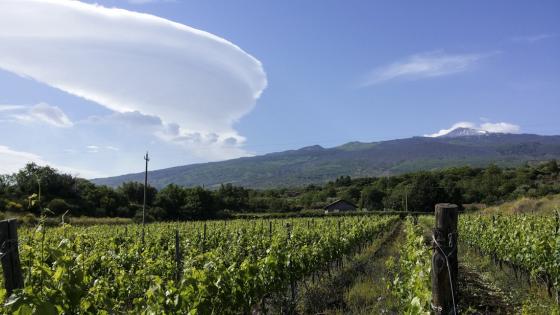From Claret to Clarity
POSTED ON 21/03/2015It was inevitable that Robert Parker, the world’s most influential wine critic, would bow out of reviewing the new bordeaux vintage. Last month’s announcement in London that he was hanging up his spittoon in favour of Neal Martin, a younger British member of his team at The Wine Advocate, had the Bordelais chewing their fingernails. Not least because after three average-quality vintages, this is a crunch year for bordeaux.

Seafood & I
POSTED ON 14/03/2015Why in the bleakish mid-winter am I about to bang on about appetite-whetting white wines? Well, firstly because there is life after meat and it’s called fish, glorious fish, and this and next month promise fish and shellfish heaven. Secondly, because we’re within a wine writer’s spitting distance of the vernal equinox on Friday. Since there’s so much more to dry white than chardonnay and sauvignon blanc, what better way to whet the appetite for oysters, moules marinières and dressed crab than with a deliciously crisp dry white or three.
A Fellowship of Riesling
POSTED ON 07/03/2015I tasted the wines but missed the speeches at The Riesling Fellowship last month; a shame because the Wines of Germany initiative turned out to be rather more controversial than expected. Asked to give their thoughts on a riesling that inspired them, Jancis Robinson MW and Hugh Johnson duly obliged. When it came to Stuart Pigott, author of The Riesling Story, The Best White Wine on Earth (£15.99, Stewart Tabori & Chang), he looked beyond his chosen 2012 Kupfergrube Gut Hermannsberg Riesling to ‘the raids that targeted the urban civilian population of Germany…It caused quite a stink’.
Do Your Duty
POSTED ON 15/02/2015In the same month that Aldi pipped Waitrose and Majestic to the best place to buy wine award, the great Burgundy estate, Domaine de la Romanée Conti, held its annual tasting in London, with its priciest wine, Romanée-Conti on offer for £2,110 a bottle plus VAT and duty. Which would you rather, 635 Aldi bottles at £3.99 or one £2,534.05 bottle of Romanée-Conti? Even if you could afford it, you still can’t buy the latter because by popular demand, it’s strictly allocated.
My Valentine
POSTED ON 14/02/2015I’m always on the horns of a dilemma, as it were, when Valentine’s Day comes round. Do you conform to type and mention the Champagne Bollinger Rosé Champagne that’s supposed to steam up your glasses and get you and your partner in the mood? Or does the cynic simply ignore one of the most rampantly, commercially exploitative days of the year? Anyway, what do people who are supposed to spend Valentine’s night staring into each other’s eyes do for the next 364 days? Answers on a postcard… The dilemma increases along with the pressure when Valentine’s Day happens to fall on a Saturday.
50 Shades of Burgundy 2013
POSTED ON 07/02/2015A French wine ad with the slogan ‘au gout de la vie’ has recently been banned as illegal for linking wine to enjoyment. Just as well that we live in a civilised country because otherwise I might be in trouble if I mentioned that the new-release burgundy 2013 vintage might just be enjoyable. Since I was busy tasting a selection of wines currently on offer en primeur (i.e. pay now, drink later), it seemed a good time to find out.
Every Little Doesn’t Help
POSTED ON 24/01/2015As you browse the supermarket aisles in search of a bottle for dinner tonight, spare a thought for the view from the sharp end. That Jacobs Creek or Echo Falls won’t have been assiduously sought out by the supermarket buyer digging for vinous gold in some riverbed or mountain vineyard in the back of the Australian or Californian beyond. As likely as not, it’s been selected by the wine team in the Berkshire, Bradford or Bracknell tasting room based on a simple equation: the bottom line.
Rioja: a wine for all seasons
POSTED ON 17/01/2015In 2004 the American super-critic, Robert Parker, predicted that Spain would emerge as a leader in wine quality and creativity by 2015. He was not far wrong. When he foretold that traditional fine wine regions such as Rioja would play second fiddle to up-and-coming regions, Toro, Jumilla and Priorat, his crystal ball let him down. The fact is that Rioja has more than kept pace with change.
Etna: The Magic Mountain
POSTED ON 10/01/2015Heading from the scruffy, coastal city of Catania in Sicily’s North-Eastern corner, a gentle winding drive up the broad circumference of Mount Etna takes you through towns whose faded grandeur is testament to a bygone era of great prosperity. Like a wisp of cigarette smoke, you soon see a small cloud floating above the majestic summit of the volcano, which, even in early summer, has not yet shed its white mantle of snow.
 On Mount Etna
On Mount Etna
What's Hot and What's Not in 2015
POSTED ON 27/12/2014A broader palette of wine styles allied to better quality is excellent news for consumers as we peer into the 2015 void. Wines once considered exotic such as albariño, grüner veltliner, picpoul de pinet and grechetto are now a supermarket own-brand must. Every supermarket worth its salt now has its own Aussie chardonnay, Marlborough sauvignon, Cape pinotage, Chilean merlot and Argentinian malbec.

